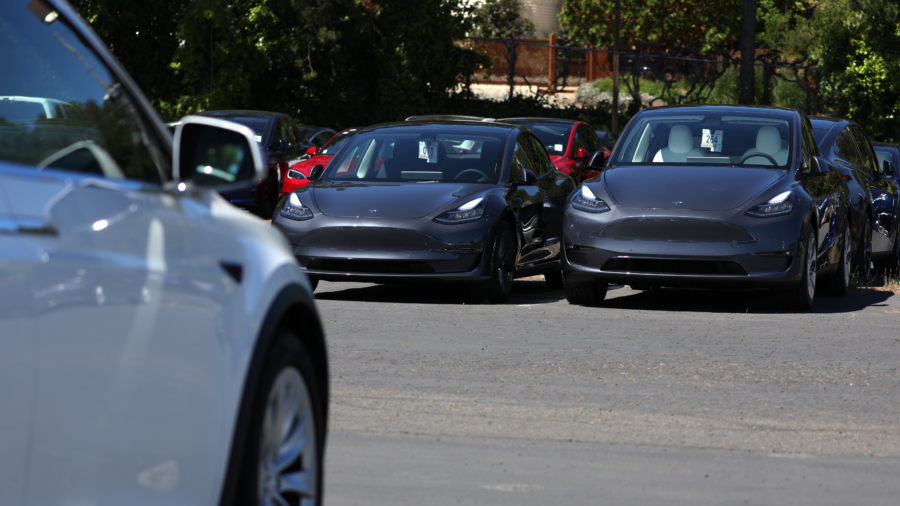Incidents of electric vehicles (EVs) catching fire after being submerged in saltwater are not uncommon, a federal traffic safety authority said.
“We are tracking Florida EV fires through news reports, fire department social media sites, and other sources, and we can confirm your experience in North Collier with reignition is not an isolated event,” the National Highway Traffic Safety Administration (NHTSA) wrote in a letter to Jimmy Patronis, the chief financial officer of Florida Department of Financial Services.
NHTSA made the statement in response to a letter from Patronis.
Patronis mentioned in his letter to the traffic safety agency an incident in North Collier, Florida, where an EV ignited and kept re-igniting after Hurricane Ian.
“I joined North Collier Fire Rescue to assess response activities related to Hurricane Ian and saw with my own eyes an EV continuously ignite, and continually reignite, as fireteams doused the vehicle with tens-of-thousands of gallons of water,” he wrote. “I was informed by the fire department that the vehicle, once again reignited when it was loaded onto the tow truck.”
“I am very concerned that we may have a ticking time bomb on our hands,” he added.
NHTSA said it first observed EV fires after a hurricane in October 2012 in Newark, New Jersey.
The fires—which are caused by the lithium-ion battery—can happen right after the vehicle was submerged in saltwater or “several weeks” after being submerged.
The traffic safety agency also instructed related parties to follow a 2014 interim guidance and not “store a severely damaged vehicle with a lithium-ion battery inside a structure or within 50 feet of any structure, vehicle, or combustibles.”
‘Tons’ of Waterlogged EVs Catching Fire
Patronis warned on Oct. 6 of the increased number of incidents in which electric vehicle batteries have corroded after Hurricane Ian.
“There’s a ton of EVs disabled from Ian. As those batteries corrode, fires start. That’s a new challenge that our firefighters haven’t faced before,” Patronis said. “At least on this kind of scale.”

Patronis shared a video alongside the tweet showing firefighters from the North Collier Fire Rescue (NCFR) attempting to put out smoke stemming from an EV in the middle of a busy road.
There’s a ton of EVs disabled from Ian. As those batteries corrode, fires start. That’s a new challenge that our firefighters haven’t faced before. At least on this kind of scale. #HurricaneIan pic.twitter.com/WsErgA6evO
— Jimmy Patronis (@JimmyPatronis) October 6, 2022
A woman can be heard saying that firefighters have already doused the vehicle with 1,500 gallons of water but that the smoke has persisted. “That goes to show how dangerous these fires are,” the woman states, adding that firefighters will now continue to “drown” the vehicle with water until it cools off.
Another man in the video can be heard saying that the vehicle will likely continue pouring out smoke “for days.”
Katabella Roberts contributed to the report.
From The Epoch Times

